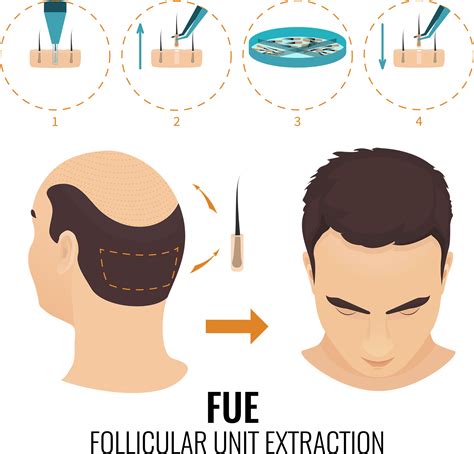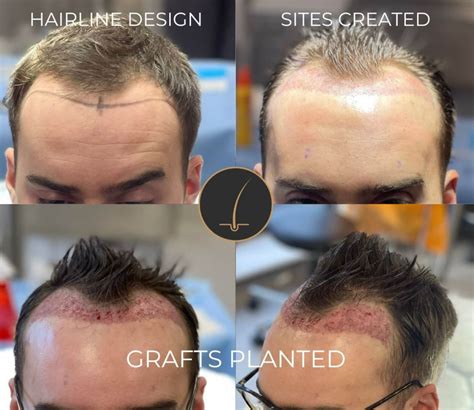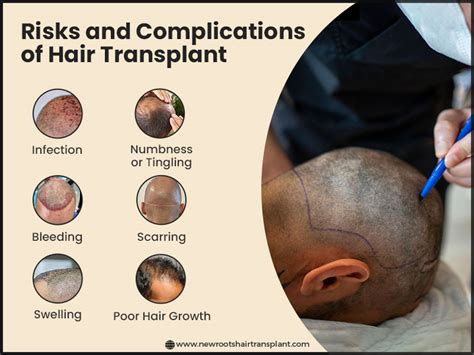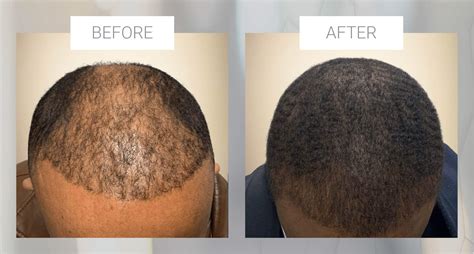Intro
Learn about hair transplant surgery, a minimally invasive procedure using follicular unit extraction and transplantation to restore hair loss, promoting natural regrowth and cosmetic enhancement.
The concept of hair transplantation has been around for decades, but it's only in recent years that the procedure has gained widespread acceptance and popularity. With advancements in medical technology and a deeper understanding of hair growth patterns, hair transplant surgery has become a viable option for individuals suffering from baldness, thinning hair, or other forms of hair loss. The prospect of regaining a full head of hair can be incredibly enticing, especially for those who have struggled with the emotional and psychological impacts of hair loss. As we delve into the world of hair transplantation, it's essential to understand the intricacies of the procedure, its benefits, and what to expect from this life-changing surgery.
Hair loss can be a debilitating experience, affecting not only one's self-esteem but also their overall quality of life. The causes of hair loss are diverse, ranging from genetic predispositions to hormonal imbalances, stress, and certain medical conditions. While there are various treatments and medications available to combat hair loss, hair transplant surgery offers a more permanent and effective solution. By transplanting healthy hair follicles from one part of the body to another, individuals can achieve a natural-looking hairline and regain their confidence. The success of hair transplantation lies in its ability to utilize the body's own hair, making it a highly effective and long-lasting solution.
The decision to undergo hair transplant surgery is a significant one, and it's crucial to approach it with a clear understanding of the procedure, its risks, and its benefits. With the help of a skilled surgeon and a well-equipped medical team, individuals can navigate the process with ease and achieve the desired results. As we explore the world of hair transplantation, we'll discuss the different types of procedures, the steps involved, and what to expect during the recovery process. By the end of this article, readers will have a comprehensive understanding of hair transplant surgery and be better equipped to make informed decisions about their hair restoration journey.
Hair Transplantation Procedures

There are several types of hair transplantation procedures, each with its unique characteristics and benefits. The most common procedures include Follicular Unit Transplantation (FUT), Follicular Unit Extraction (FUE), and Robotic Hair Restoration. FUT involves the removal of a strip of hair-bearing skin from the back and sides of the head, which is then dissected into individual follicular units and transplanted to the balding areas. FUE, on the other hand, involves the direct extraction of follicular units from the donor area, eliminating the need for a linear incision. Robotic Hair Restoration utilizes advanced technology to assist the surgeon in extracting and transplanting hair follicles, offering increased precision and efficiency.
Benefits of Hair Transplantation
The benefits of hair transplantation are numerous, with the most significant advantage being the ability to achieve a natural-looking hairline. By using the body's own hair, the transplanted hair grows and behaves like normal hair, allowing individuals to style it as they please. Hair transplantation is also a relatively safe procedure, with minimal risks and complications. The results are long-lasting, with most individuals experiencing significant hair growth within 6-12 months after the procedure. Additionally, hair transplantation can be used to restore hair in other areas of the body, such as the eyebrows, beard, and mustache.The Hair Transplantation Process

The hair transplantation process typically begins with an initial consultation, where the surgeon assesses the individual's hair loss pattern, discusses their goals and expectations, and determines the best course of treatment. The procedure itself can take several hours, depending on the number of grafts being transplanted. The steps involved in the hair transplantation process include:
- Preparation: The donor area is prepared, and the hair is trimmed to facilitate the extraction process.
- Extraction: The follicular units are extracted from the donor area, either through FUT or FUE.
- Dissection: The extracted follicular units are dissected into individual grafts.
- Recipient site creation: The recipient sites are created in the balding areas, where the grafts will be transplanted.
- Transplantation: The grafts are transplanted into the recipient sites, where they will grow and develop into healthy hair.
Recovery and Aftercare
The recovery process after hair transplantation is relatively straightforward, with most individuals able to return to their normal activities within a few days. The transplanted area may be swollen, red, and sore, but these symptoms typically subside within a week. It's essential to follow the surgeon's instructions for aftercare, which may include: * Avoiding strenuous activities and heavy lifting * Keeping the transplanted area clean and dry * Avoiding direct sunlight and UV radiation * Taking medications as prescribed to manage pain and prevent infectionHair Transplantation Costs and Financing

The cost of hair transplantation can vary significantly, depending on the location, surgeon, and number of grafts being transplanted. On average, the cost of hair transplantation can range from $3,000 to $15,000 or more. While this may seem like a significant investment, many individuals find that the benefits of hair transplantation far outweigh the costs. Financing options are also available, allowing individuals to spread the cost of the procedure over several months or years.
Choosing the Right Surgeon
Choosing the right surgeon is crucial to the success of hair transplantation. It's essential to research and find a surgeon who is experienced, skilled, and has a proven track record of delivering excellent results. Some factors to consider when choosing a surgeon include: * Qualifications and certifications * Experience and reputation * Before-and-after photos and testimonials * Communication style and bedside mannerHair Transplantation Risks and Complications

As with any surgical procedure, hair transplantation carries some risks and complications. These may include:
- Infection and scarring
- Bleeding and hematoma
- Nerve damage and numbness
- Graft failure and rejection
- Uneven growth and distribution
Minimizing Risks and Complications
To minimize the risks and complications associated with hair transplantation, it's essential to choose a skilled and experienced surgeon. Additionally, individuals should follow the surgeon's instructions for aftercare and attend all scheduled follow-up appointments. By taking these precautions, individuals can reduce the risk of complications and ensure a smooth and successful recovery.Hair Transplantation for Women

Hair transplantation is not just limited to men; women can also benefit from this procedure. Female pattern hair loss can be caused by a variety of factors, including hormonal imbalances, genetics, and certain medical conditions. Hair transplantation can help women restore their hairline, improve their self-esteem, and regain their confidence. The procedure for women is similar to that for men, with some adjustments made to account for the differences in female hair loss patterns.
Female Hair Loss Patterns
Female hair loss patterns can vary, but the most common types include: * Female pattern baldness: Characterized by thinning hair on the top and crown of the head. * Female androgenetic alopecia: Caused by hormonal imbalances and genetics. * Telogen effluvium: A condition that causes excessive hair shedding due to stress, hormonal changes, or certain medical conditions.Hair Transplantation for Ethnic Hair

Hair transplantation can be performed on individuals with ethnic hair, including African American, Asian, and Hispanic hair types. However, the procedure may require some adjustments to account for the unique characteristics of ethnic hair. For example, African American hair may require a more delicate approach due to its fragile nature, while Asian hair may require a more precise technique to achieve the desired results.
Ethnic Hair Considerations
When performing hair transplantation on ethnic hair, some considerations include: * Hair texture and fragility * Hair growth patterns and direction * Skin tone and pigmentation * Cultural and social factorsWhat is the success rate of hair transplantation?
+The success rate of hair transplantation is generally high, with most individuals experiencing significant hair growth within 6-12 months after the procedure. However, the success rate can vary depending on the individual's hair loss pattern, the skill and experience of the surgeon, and the quality of the transplanted hair.
Is hair transplantation painful?
+Hair transplantation is typically performed under local anesthesia, which numbs the area and minimizes discomfort. Some individuals may experience mild pain or discomfort during the procedure, but this can be managed with medication and other pain relief methods.
Can I wear a hairpiece or wig after hair transplantation?
+Yes, individuals can wear a hairpiece or wig after hair transplantation. However, it's essential to wait until the transplanted area has fully healed and the hair has grown to a sufficient length to support the hairpiece or wig.
In conclusion, hair transplantation is a highly effective and long-lasting solution for individuals suffering from hair loss. By understanding the different types of procedures, the benefits, and the risks, individuals can make informed decisions about their hair restoration journey. Whether you're a man or woman, hair transplantation can help you achieve a natural-looking hairline, improve your self-esteem, and regain your confidence. If you're considering hair transplantation, we encourage you to consult with a skilled and experienced surgeon to discuss your options and determine the best course of treatment for your individual needs. Share your thoughts and experiences with hair transplantation in the comments below, and don't forget to share this article with anyone who may be struggling with hair loss.
